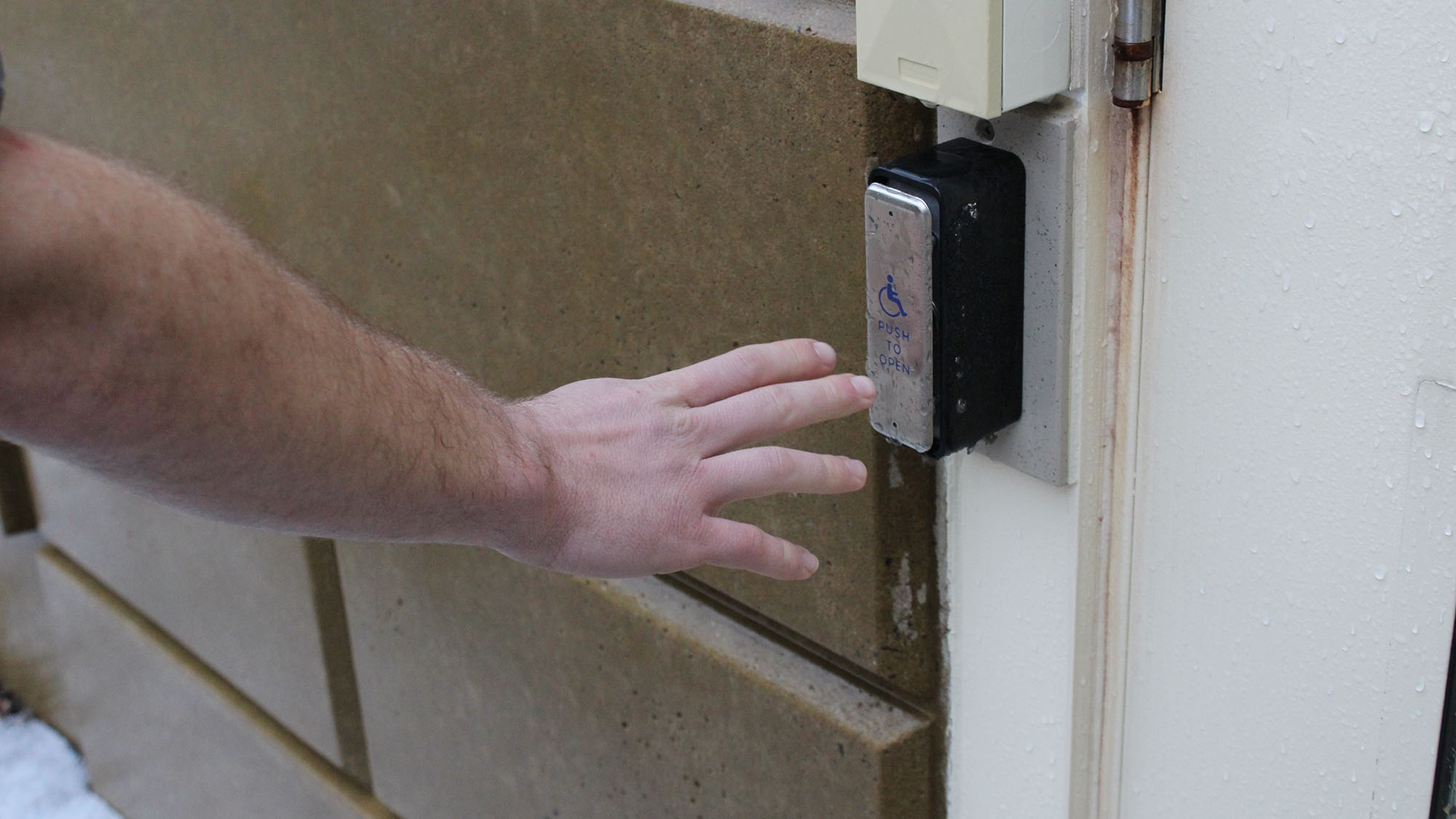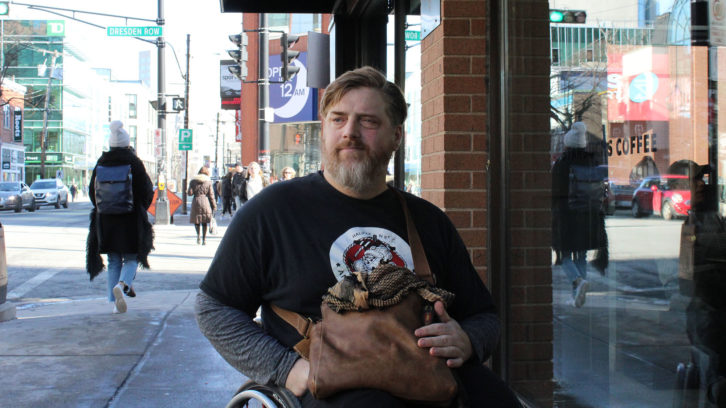Accessibility in HRM: Why some businesses don’t have automatic door openers
There are exemptions in the regulations for businesses under a certain size

caption
Photo illustration of someone using automatic door.Paul Vienneau has encountered many buildings he cannot get into with his wheelchair. But if he can get to a door, usually he can open it.
Yet he knows some people can’t, which is why he has been advocating for more businesses in the Halifax Regional Municipality to have automatic doors.
“Accessibility should be the cost of doing business in the city,” said Vienneau, a disability activist.
Automatic doors have a huge impact on those who need them, he said, and are a convenience for everyone else. Related stories
Vienneau has noticed that almost any new building in the HRM has a door opener installed and was surprised to hear that the retail businesses in the Vélo on Gottingen Street do not have them.
“To me this is really obvious that there should be door openers on all those (businesses),” said Vienneau. “Having a door like that is a barrier and you will have people who will not go into your place because it is not easily accessible.”
The Vélo building was constructed in 2018. There are apartments upstairs and retail businesses, including Fortune Doughnut and Springhouse restaurant, at street level.
Ross Cantwell, the property manager and owner of the Vélo, said the building meets regulations.
“All the retailers built their own spaces and they built them based off of plans that were submitted to the municipality and were approved,” he said.
The Vélo retail stores and apartments do have barrier-free entrances.
“Modifications were made to the building so that there are no steps, you can roll straight into each space, which a lot of buildings downtown don’t seem to have,” said Cantwell.
Nova Scotia Building Code Regulations require every door that provides a barrier-free path into the building, like those that are flat with no steps, to be equipped with a power door operator.
This is why the entrance to Vélo apartments has one.
Yet the regulations do not apply to individual suites less than 500 square metres, which in this case includes retail stores like Fortune Doughnut and Springhouse.
Vienneau doesn’t see why the Vélo retail businesses wouldn’t install them anyway.
“Steps are a real concrete barrier, but things like this are almost a symbolic barrier where it is extra effort to get in,” said Vienneau. “I’m not going to knock on the window or ask a stranger. You do that the first 5,000 times, it gets a little dehumanizing and weary.”

caption
Paul Vienneau outside the Starbucks location with automatic doors on Spring Garden Road.Springhouse used to be located at the Halifax Seaport Farmers’ Market. Co-owner Jessie Doyle said they liked the level flooring and accessible washroom at the Vélo, but they were hoping for an automatic door too.
“Our landlord, the owners of the building, are the ones who built the space,” said Doyle. “But they didn’t install the push buttons and they said it was mostly expense related.”
The expense is a concern for Doyle too. She said the expansion has left Springhouse with little cash flow, so they don’t have the money for an automatic door.
A straight push button and operator costs around $2,000, said Marc Bezzina, owner of Supreme Lock Solutions Ltd., a Halifax business that installs automatic doors.
Bezzina said often times when people come to his company to get an automatic door installed, they do so through a grant.
Businesses can apply to Nova Scotia’s Business ACCESS-Ability Grant Program for accessibility-related improvements, which includes door openers. To qualify, the improvement must not be legally required.
In 2017, Nova Scotia’s Accessibility Act was passed with the goal of making the province inclusive and barrier-free by 2030. Public buildings and places where people can get goods and services are among those expected to implement these standards, starting no later than 2022.
Vienneau hopes to see buildings become more accessible before 2030.
“They are going to have to do it at some point. I would rather they do it now than drag their feet.”
About the author
Olivia Malley
Hailing from Dartmouth Nova Scotia, Olivia is a journalist passionate about the HRM. Outside of reporting she enjoys singing in King's a capella...
